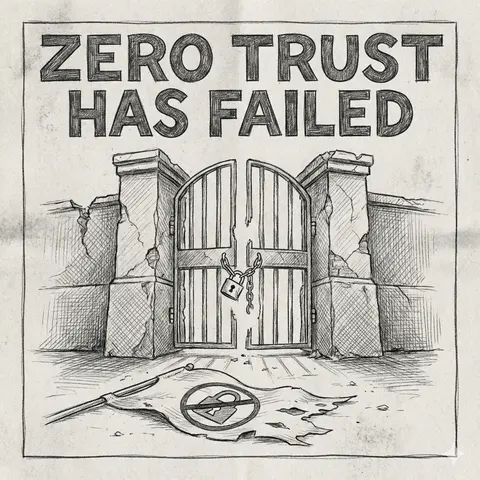
Zero Trust Has Failed (and What CISOs Are Doing Differently in 2026)
In the complex and ever-expanding digital landscape of 2025, a critical concept has emerged as a cornerstone of effective cybersecurity: the Principle of Least Privilege (PoLP). Far from a new idea, this principle has been revitalized and is now seen as a non-negotiable strategy for protecting an organization's most valuable assets. The core of this approach is simple yet powerful: every user, device, and application should be granted only the minimum level of access and permissions necessary to perform its required functions, and nothing more. This contrasts sharply with legacy systems where users often had broad, unrestricted access, a practice that has proven to be a major vulnerability.
In traditional network environments, it was common practice to grant users more permissions than they actually needed. A database administrator might have access to every table, even those outside their project scope. A marketing team member might have write access to sensitive financial documents. While this might seem convenient for workflow, it creates a massive attack surface. When a user account is compromised—be it through a phishing attack, weak passwords, or malware—an attacker gains control of all the permissions associated with that account. With excessive privileges, a malicious actor can move laterally through the network, access highly sensitive data, and even deploy ransomware or other destructive payloads. The devastating impact of the 2014 Sony Pictures Entertainment breach, where attackers used compromised administrative credentials to cripple the entire network, serves as a stark reminder of the perils of overly permissive access.
Implementing a least privilege approach is a methodical process that requires a fundamental shift in how an organization manages access. It is not just about revoking permissions but about building a robust framework of granular access controls. The first step involves meticulously identifying and classifying all assets—data, applications, and systems—based on their sensitivity and importance. This allows security teams to understand what needs the most protection.
Next, organizations must define user roles and responsibilities with precision. Instead of broad job titles, access policies should be tied to specific functions. For example, a role might be "HR_Recruitment_Team_Lead" with read-only access to candidate resumes, while another is "HR_Payroll_Specialist" with read/write access to salary information. This specificity ensures that permissions are always directly linked to a user's operational needs.
Furthermore, a key component of this strategy is Just-in-Time (JIT) access. This is a dynamic approach where privileges are not permanent but are instead provisioned on a temporary basis for a specific task and automatically revoked once the task is completed or the time limit expires. For highly sensitive operations, this can be combined with a Break Glass procedure, a secure process for granting emergency, time-limited administrator access when standard credentials are insufficient. This minimizes the window of opportunity for an attacker to exploit a high-privilege account.
Finally, the entire system must be subject to continuous monitoring and auditing. Access requests, changes in permissions, and user activities should be logged and regularly reviewed. Automated tools can help detect anomalies, such as an account attempting to access data outside its normal scope, which could signal a compromise. This continuous feedback loop ensures that the least privilege model remains effective and adapts to a changing environment.
The principle of least privilege applies to more than just human users; it is equally crucial for applications and services. A web server, for instance, should only have the permissions it needs to serve web pages and connect to a database, not to delete core system files or access confidential customer data. Similarly, a third-party application integrated into a system should only be granted the specific API permissions required for its functionality. This is a core tenet of modern security models, including Zero Trust Architecture, where every access request is verified based on context and policy, and implicit trust is completely removed.
The benefits of a least privilege approach are extensive. It significantly reduces the attack surface by preventing lateral movement within a network. It also minimizes the impact of a breach; even if an account is compromised, the damage is contained to the limited resources that account can access. Moreover, it improves regulatory compliance by providing a clear audit trail of who accessed what and when. In an age where data breaches are not a matter of if, but when, adopting the least privilege approach is no longer an optional security measure—it is a fundamental requirement for any organization serious about protecting its integrity and its customers' trust.